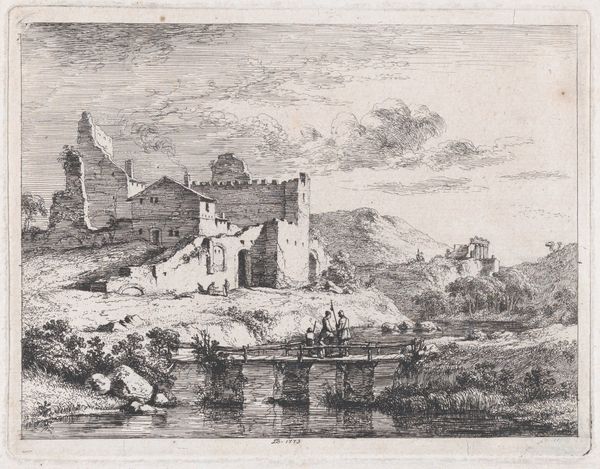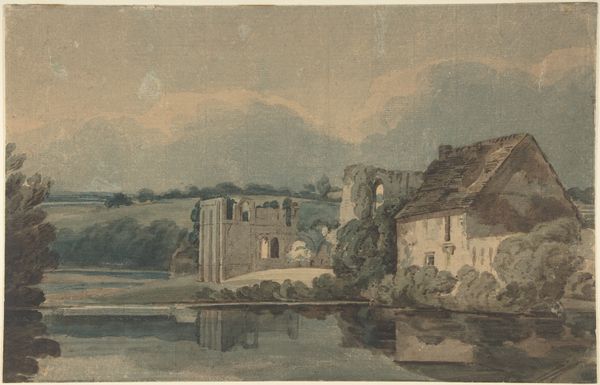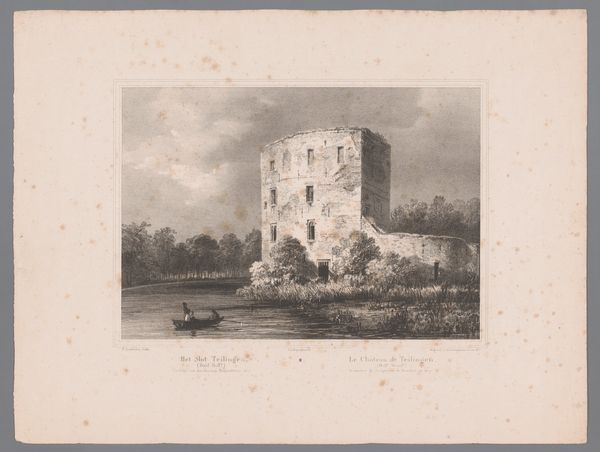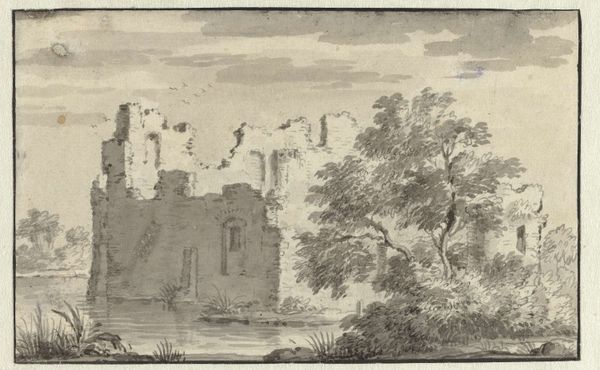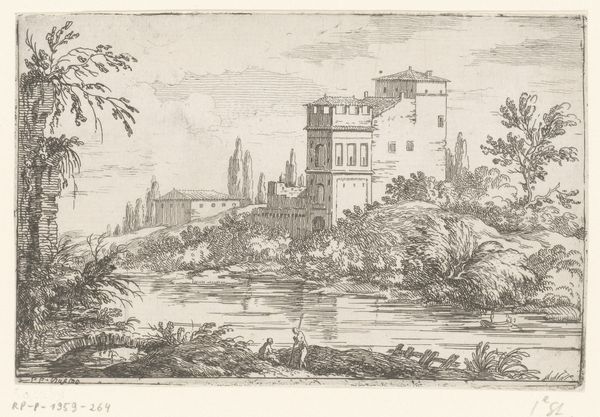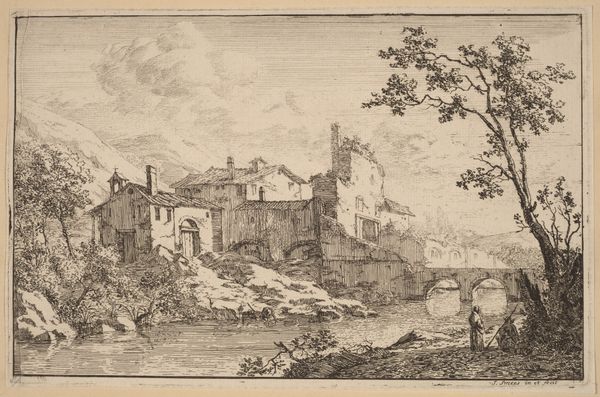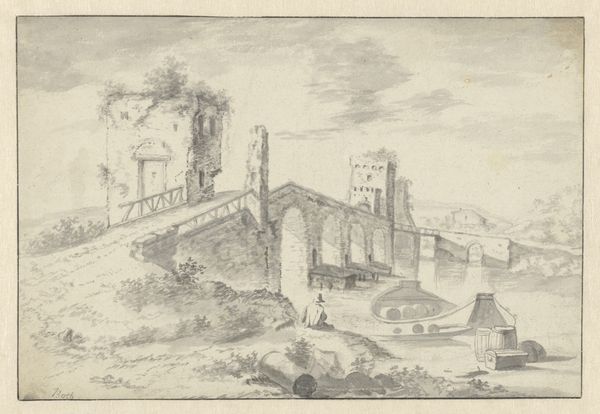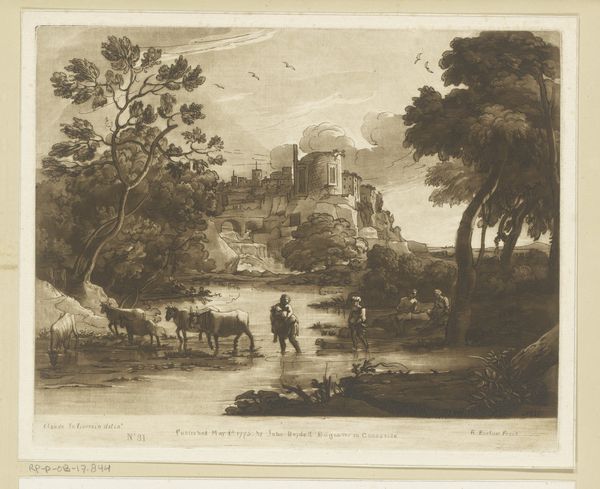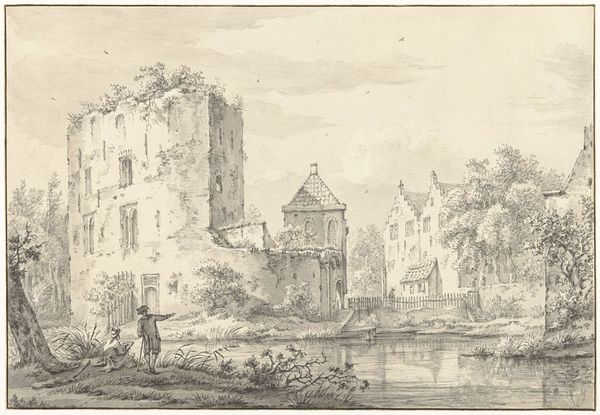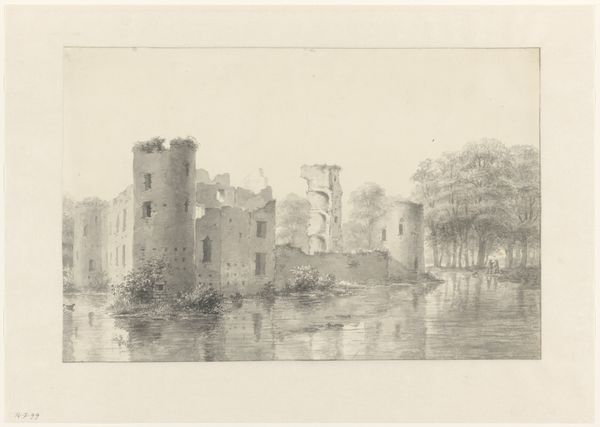
drawing, paper, ink, pen, architecture
#
drawing
#
baroque
#
dutch-golden-age
#
landscape
#
paper
#
ink
#
pen
#
architecture
Copyright: Public Domain
Editor: This is Jacob Esselens' "Ruine von Schloss Honingen in Kralingen bei Rotterdam," done in ink and pen on paper. The decay in the architecture really creates a somber, reflective atmosphere. What stands out to you when you look at this piece? Curator: The somber mood you perceive is carefully constructed. Note how the artist uses varying densities of lines to render the ruin and its reflection. The precise rendering of the reflection adds a level of formal complexity, almost doubling the subject while simultaneously abstracting it. Editor: I see what you mean! It's not just a straight mirror image. The lines in the water feel much more chaotic compared to those outlining the castle itself. Curator: Exactly. The controlled lines in the architectural rendering, set against the looser, more gestural strokes in the water, create a powerful tension. It encourages a dialogue between order and disorder, permanence and decay, mirroring life itself. Observe, too, the subtle tonal gradations; they lead the eye through the composition. Editor: So the artist isn’t just depicting a ruin; they’re making a visual argument about the nature of change and time? Curator: Precisely! Esselens’ work is deeply involved with questions of representation and abstraction. One must appreciate not only the subject, but how its meticulous depiction evokes fundamental themes. Editor: That makes me look at it differently now. I was stuck on the 'ruin' aspect but focusing on the formal relationships changes the whole meaning. Curator: Indeed. Art allows us to deconstruct and analyze inherent pictorial strategies; what we initially saw as a bleak illustration is a meticulously composed meditation on time.
Comments
No comments
Be the first to comment and join the conversation on the ultimate creative platform.
